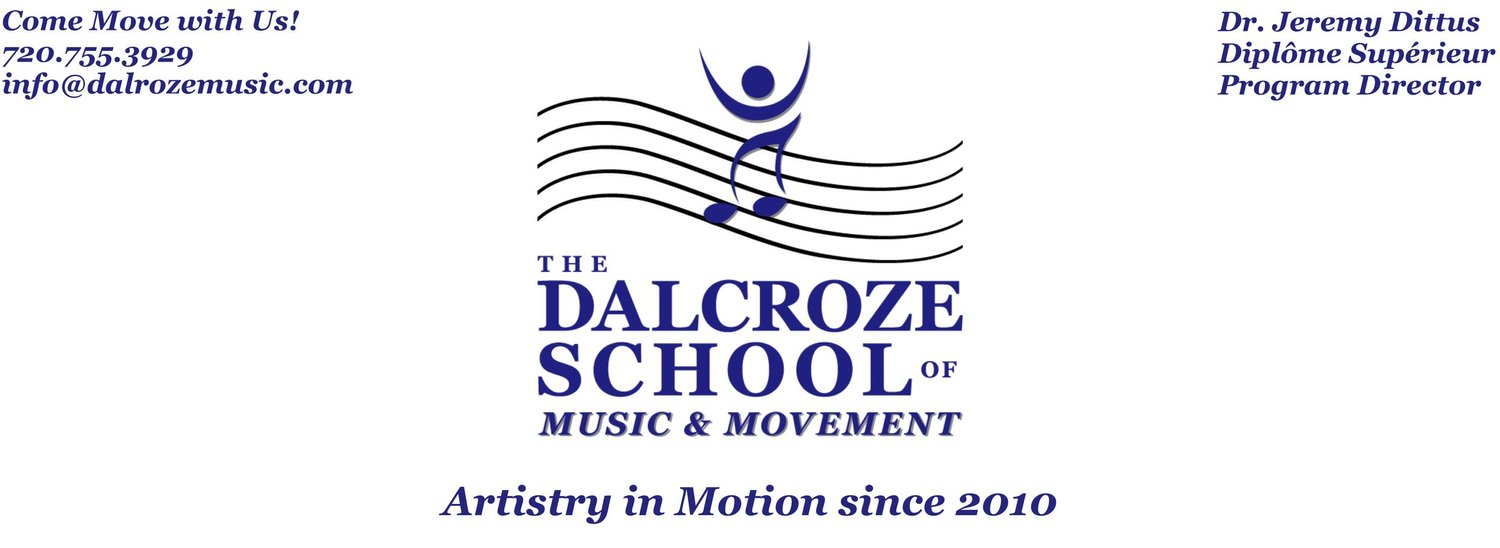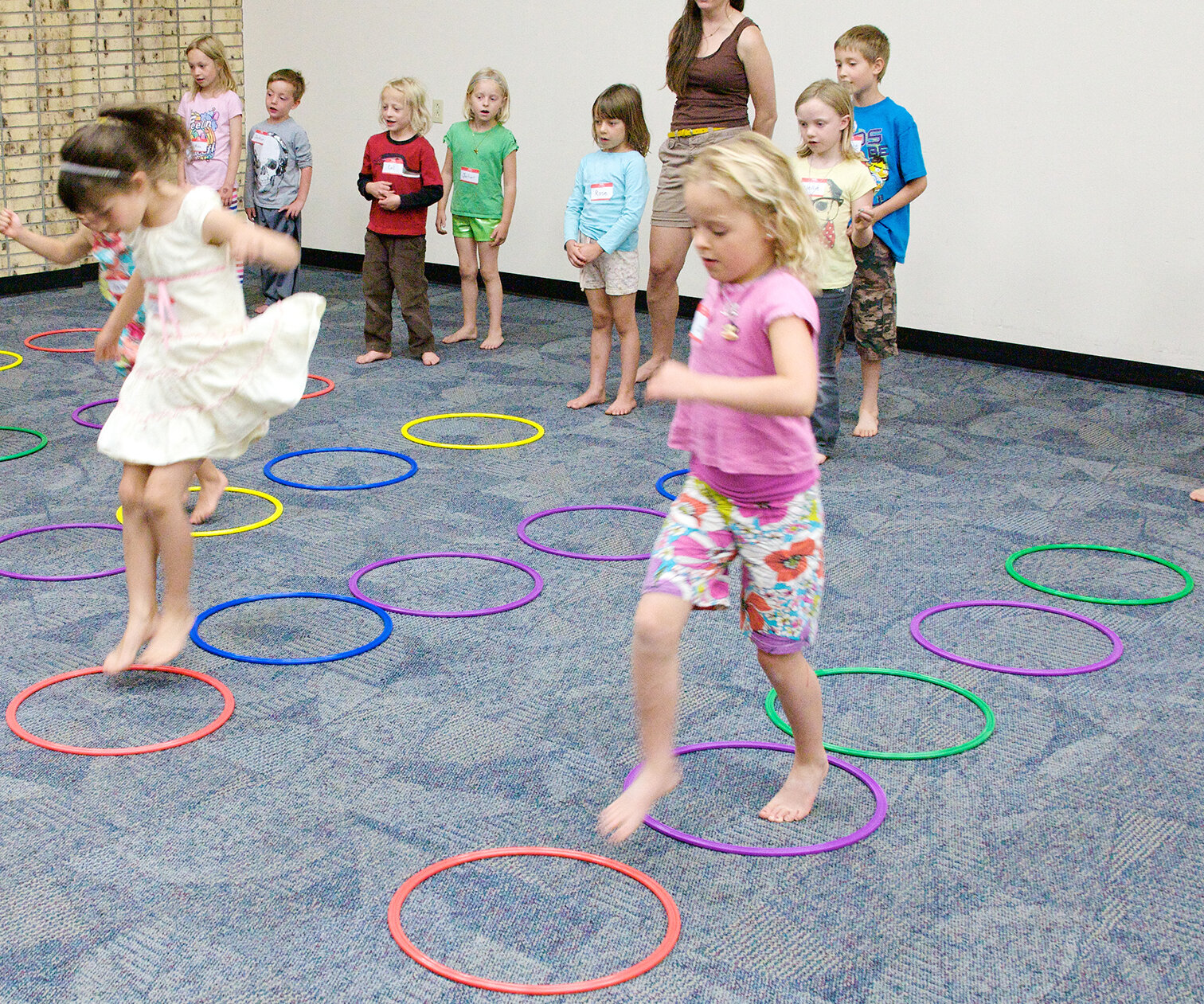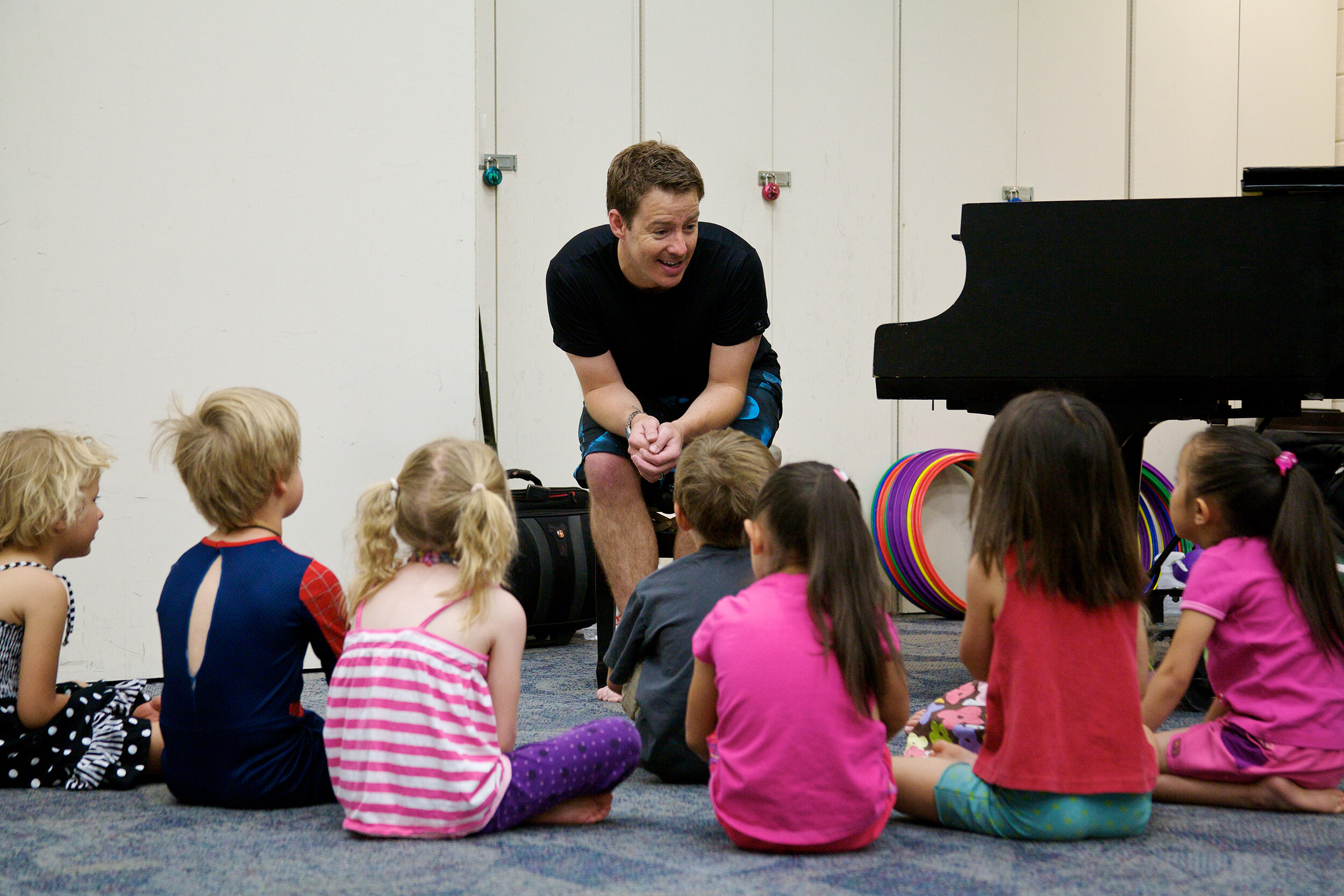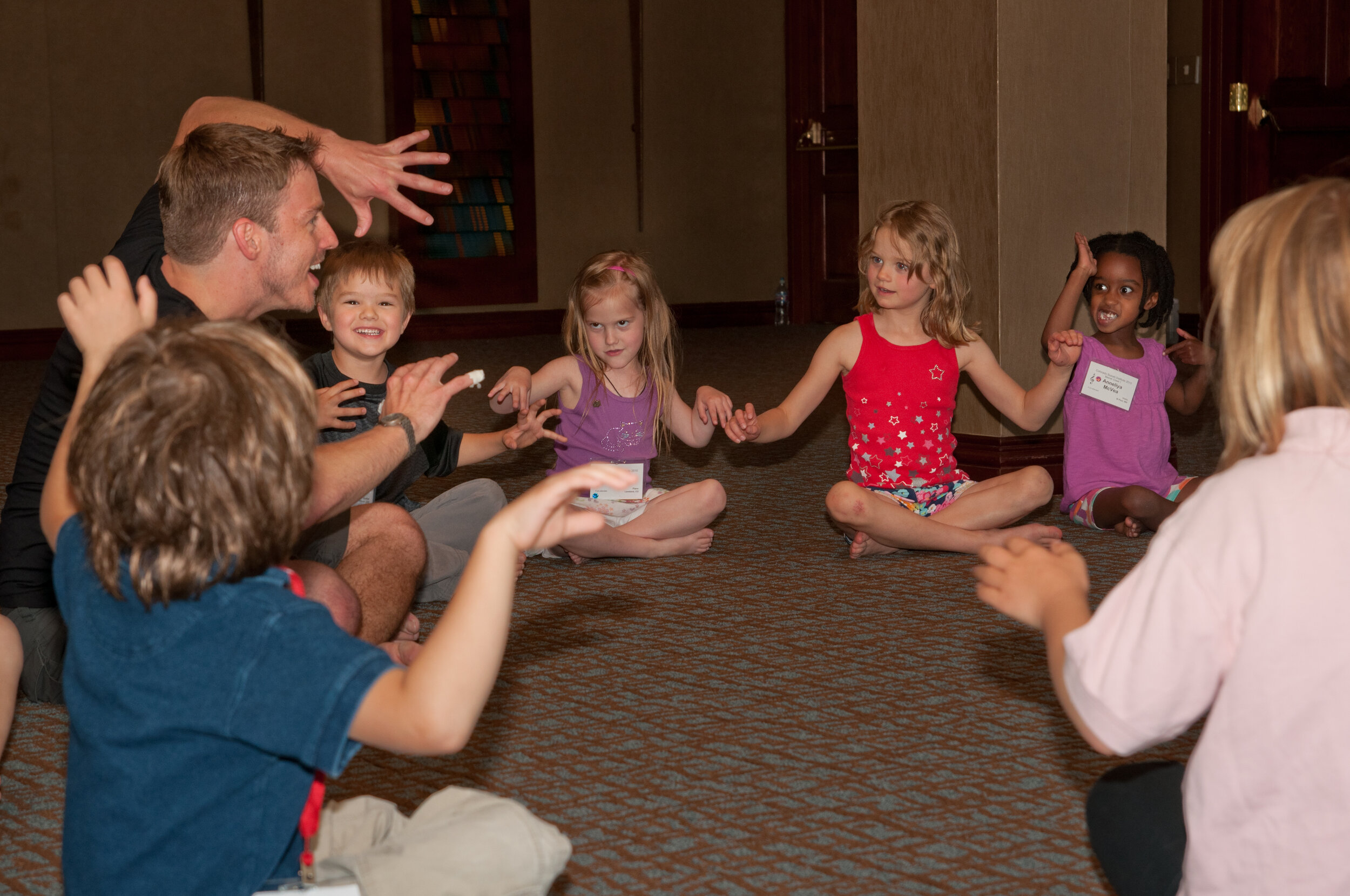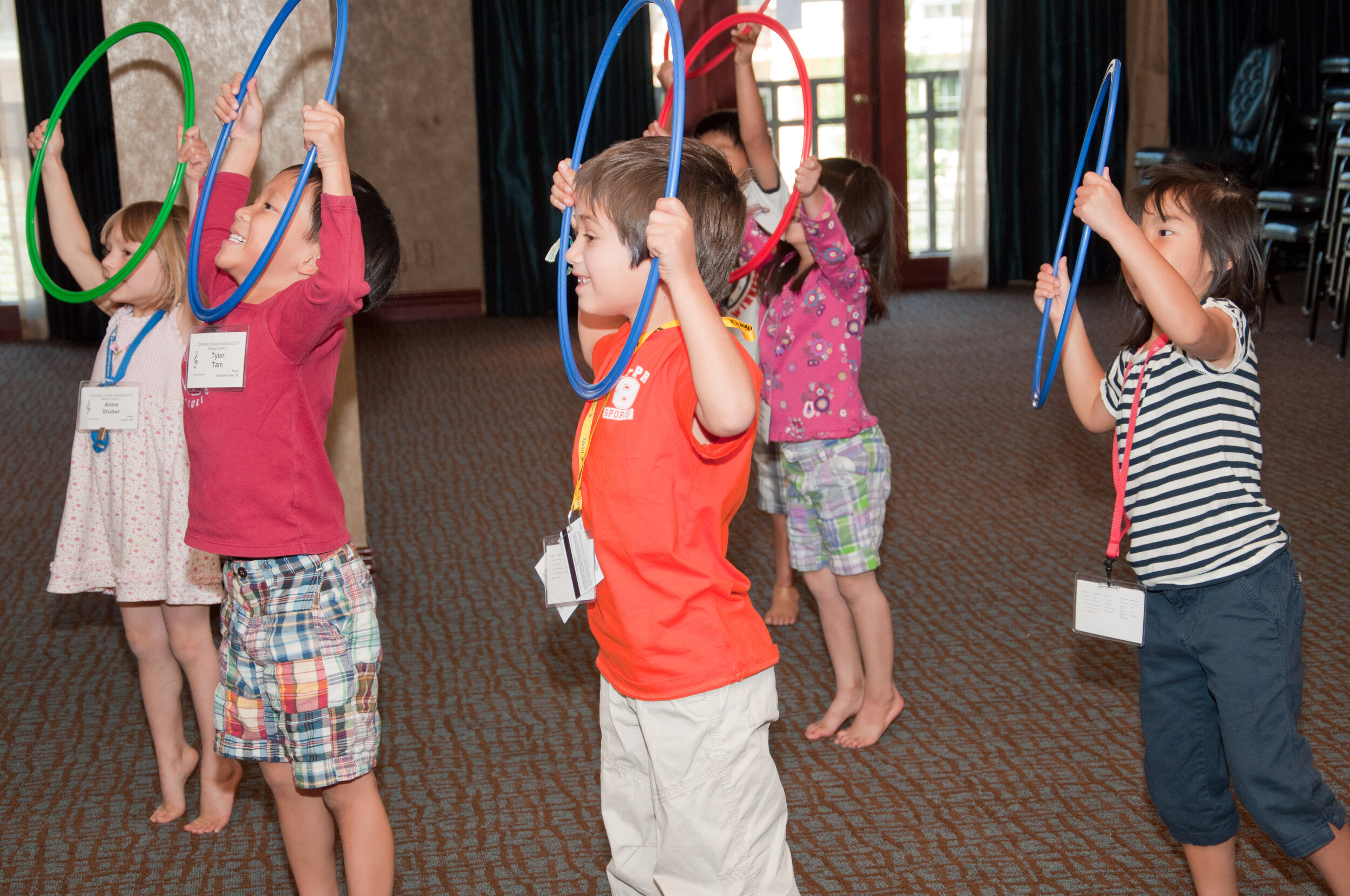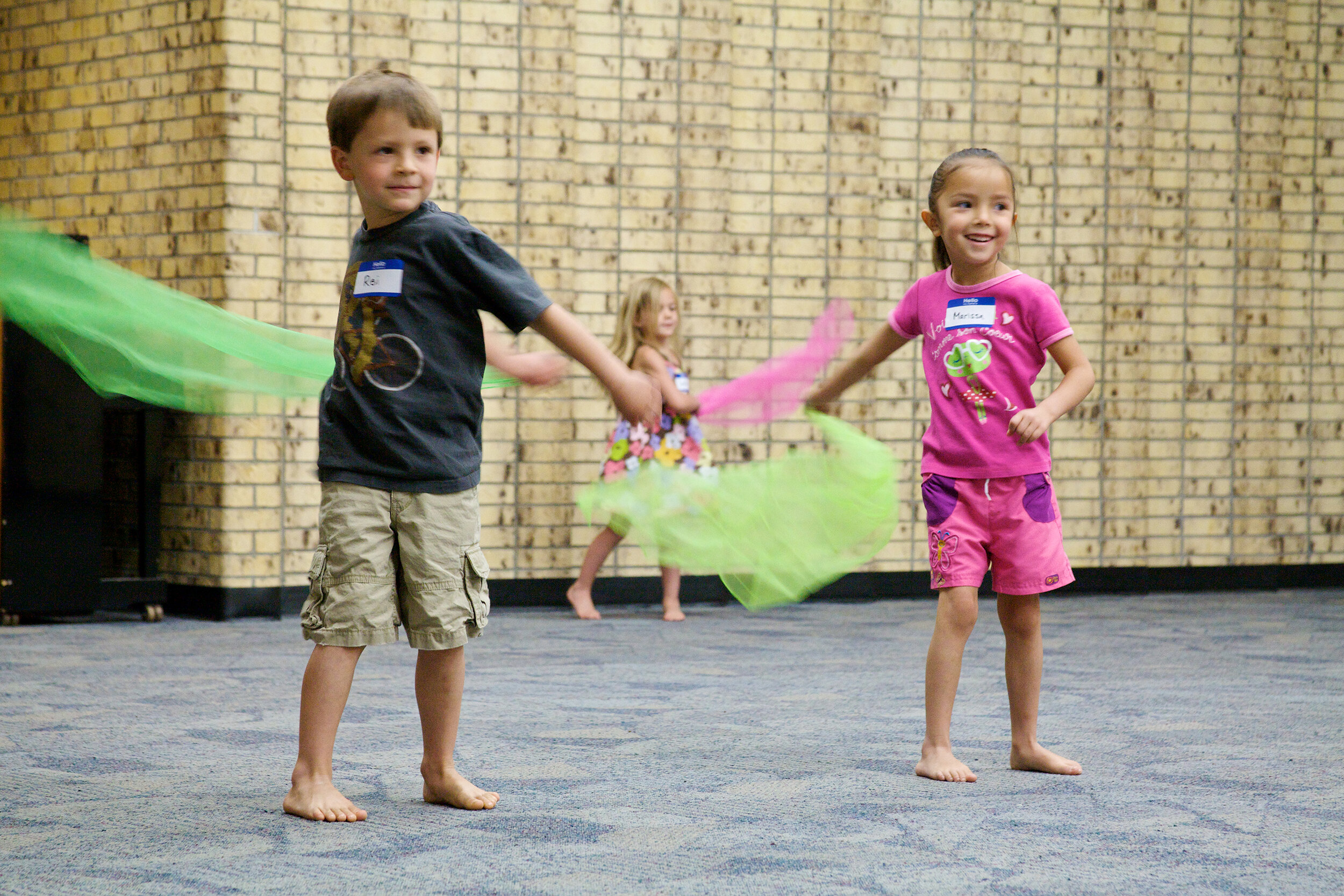Dalcroze-Eurhythmics for Young Children
In-Person and Virtual Options
High-energy, Exciting, and Creative for Active Kids Ages 4-7!
We love learning together!
A Joyful, Purposeful, and Active Way to Experience Music
The Dalcroze School of Music and Movement offers exciting classes designed just for young learners.
Our process oriented curriculum inspires students to experience music joyfully from the inside out.
Dalcroze-Eurhythmics classes will take two years to cover all of the material in the curriculum.
Globally, Dalcroze-Eurhythmics:
Prepares the body as an instrument by increasing coordination, control, balance, attention, flexibility, focus, spatial awareness, emotional knowledge, and vocal precision
Trains the eyes, ears, and voice in rhythm, pitch, form, and musical nuances
Increases our students' capacity for independent and cooperative learning
Supports a joyous and discovery-based environment for music education
Provides a deep and solid base for students to successfully enter the Dalcroze Rhythmic-Solfège sequence and perhaps begin instrumental study
Dalcroze-Eurhythmics Goals and Objectives
- Rhythmic, metric, and expression knowledge: moving, listening, singing, analyzing, writing, improvising, and deep understanding of the following musical concepts in both literal and symbolic notation.
- Note values: Quarter Notes, Eighths, Half Notes, Dotted Half Notes
- Simple meters of 2, 3, and 4
- Phrases, musical gesture, slurs, form
- Musical texture (polyphony versus melody)
- Expression symbols and their musical meanings: for example: Forte and Piano.
Pitch matching and identification: developing the ear for accurate intonation and healthy singing.
- Students will learn to sing and identify scale degrees 1-5 in major and play them on a xylophone.
- Basic echo canons and folk songs.
- Corporal embodiment of pitches in physical space.
- Identification of major and minor tonal landscapes.
Musical use of materials: hoops, bean bags, ropes, scarves, ribbons, batons, balloons, balls of various sizes (kicking, tossing, bouncing, rolling), etc.
Musical use of different instruments: claves, drums, maracas, xylophones, etc.
- Solo work: working or performing solo develops confidence, assurance, and independence.
Cooperative learning and beginning ensemble skills invite students to learn flexibility, adaptability, and compliance in addition to coordination, intention, balance, and control):
- Moving, dancing, clapping, sharing, improvising, singing with a partner or small group.
- Exact mirroring of gestures provided by the teacher or other students in the class.
Imagination: gestures, images, story-telling, and programmatic music (music that tells a story) helps to encourage, stimulate, and develop the child's imagination.
Appropriate knowledge and use of body parts and joints (head, trunk, hips, limbs etc.):
- How different parts of our bodies move, their range of motion, and their dynamic qualities
- Basic independence of the limbs (move one limb while the others are stationary)
- Basic large and small motor skills
Spatial awareness: both physical space and musical space.
- Spatial and Movement Qualities: above and below, over and under, side to side, up and down, closed and open, curvy and straight, forward and backward, right and left, near and far, center and periphery, around and through, away and toward, beginning and end, front and back, jagged and smooth, heavy and light, thick and thin, opposites, contrary motion, crossing the midline, etc.
- Basic shapes with the body: lines, circles, squares, triangles, rectangles, ovals, etc.
Various types of locomotor skills:
- Movement across the floor on one's feet, back, stomach, side, knees, hands and knees (crawling), hands and feet (bear walk, crab walk), etc.
- Creative Movement: Rolling, crawling, sliding, creeping, growing, collapsing, sneaking, walking, marching, trotting, jogging, gliding, running, tip-toe walking/running, stomping, lunging, leaping, jumping, hopping, galloping, chassé, skipping, swinging, swaying, spinning, turning, shaking, wiggling, etc.
- Emotional and Musical Impact from moving in these different ways.
Questions
If you have any questions, please contact us today!
“Both of my daughters have been blessed with Jeremy’s instruction. His love of music is contagious. Jeremy has the rare talent of developing relationships that inspire an extremely high level of performance. The Dalcroze School of the Rockies has ensured that my children have an internal and external understanding of music theory that will continue to influence the quality of music they make.”
“I love the dynamic energy of the Dalcroze classroom: students poised with razor-sharp ears, tuned into every nuance coming from the piano, and ready to demonstrate with their bodies everything they hear. This type of learning inspires creativity, alive with the possibility of new discoveries at every turn, leap, and gesture. When students acquire the habit of listening with this type of intensity, they begin to develop fluency in the language of music and their artistic potential can grow exponentially!”
